
| Comet Shoemaker-Levy 9 The Great Comet Crash of 1994 |
|---|

| Comet Shoemaker-Levy 9 The Great Comet Crash of 1994 |
|---|
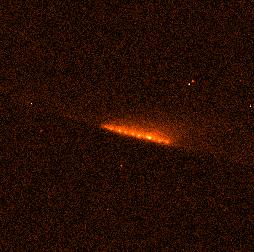
On the night of March 24, 1993, Eugene and Carolyn Shoemaker and David Levy discovered a strange looking comet from a photograph taken from the 0.4 meter Schmidt telescope in Palomar Observatory in Califonia. The comet was named Comet Shoemaker-Levy 9 after the discoverers, the ninth comet discovered by this team. The comet was very elongated, and it turned out that comet had been pulled apart due to tidal forces from an extremely close flyby of Jupiter on July 8, 1992. Twenty-one separate fragments were eventually identified. By April 5, 1993, enough observations of the comet have been made to better define the comet's orbit, and it was surprisingly found to be in orbit around Jupiter. By May 25, additional observations helped refined the orbit further, and a exciting new development came forth: Comet Shoemaker-Levy 9 could possibly impact Jupiter in July 1994! By June 1993, the comet's orbit was well determined and the impacts into Jupiter would definitely occur.
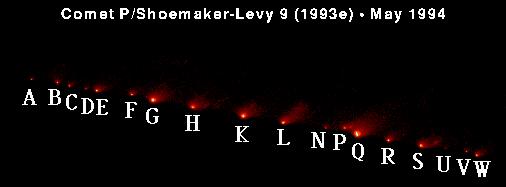
With one year's advance notice, astonomers and observatories made plans to observe this unique event. This would mark the first time that a collision between two solar system bodies would be observed. Most astronomers downplayed the event to the public, mainly due to past disappointments with a couple of expected bright comets in the previous two decades that did not live up to expectations. Astronomers noted that the impacts were very unusual, but they warned that the effects of the impacts of the comet would probably not be visible to Earth except by the largest telescopes. Also, the impacts would occur on the night side of Jupiter, out of direct view from Earth. The 21 fragments would hit Jupiter over a one week period starting on July 16, 1994, and everyone waited anxiously for that day to arrive.
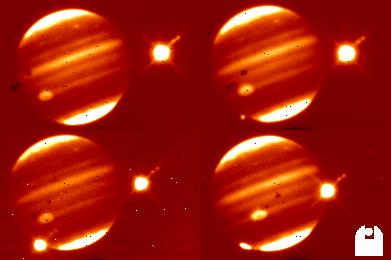
When the first impact hit (called Fragment A), a plume sighting from the impact was reported by Calar Alto Observartory in the Canary Islands and the South African Astronomical Observatory (SAAO). The Calar Alto and SAAO images of the plume were quickly placed on the Internet just a few hours after they were taken. The Calar Alto images were taken in the infrared, and there was no doubt of the first impact - showing a huge explosion off the side of Jupiter. The Hubble Space Telescope also took images of the impact, but it took longer to download the images from the spacecraft down to Earth. During a live NASA press conference, Eugene and Carolyn Shoemaker had mentioned the possible plume sigthings and were anxiously awaiting the Hubble image, unaware that images confirming the impacts were already on the Internet. When the Hubble images did arrive, a joyous Heide Hammel ran onto the stage with the good news. Hubble had also detected the plume, and showed the impact site on Jupiter as it rotated into view - a feature that appeared as a black eye on the top of the Jovian cloudtops. The first impact was more visible than what everyone had imagined, and everyone then knew they were in for a week long extravaganza for the remaining impacts. Comet fever had set in.
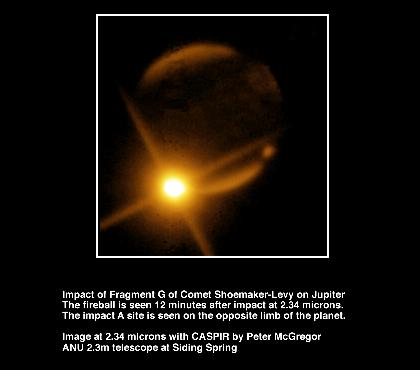
Everyone around the world with a telescope were now viewing Jupiter in earnest. The impact sites were visible even fom the smallest amature telescopes. A Internet frenzy ensued as hundreds of images were made available on the World Wide Web. The 21 impacts were happening around the clock, so someone around the world was able view each impact. The plumes were particularly prominent in the infrared, often oversaturating the infrared detectors, but displaying spectacular images of the impact. By sheer coincidence, the Galileo spacecraft, enroute to Jupiter, was in position to view the impact sites directly and took the only direct measurements of the comet collisions.
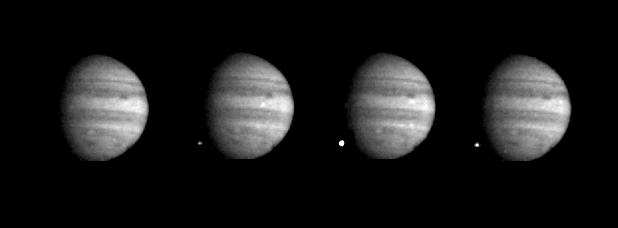
It was all over by July 22, 1994, and everyone drew a big excited sigh of relief. Estimates of the fragment sizes ranged from 1 to 2 km for the larger pieces. Water was detected at the impact sites. The comet collision was a once-in-a-lifetime event, and perhaps a once-in-a-millennium event. The show put on by Comet Shoemaker-Levy 9 was tuly spectacular and beyond everyone's expectations.
Ron Baalke, STARDUST Webmaster, ron@jpl.nasa.gov
Last Updated Wednesday, 07-Jun-2000 13:50:34 PDT